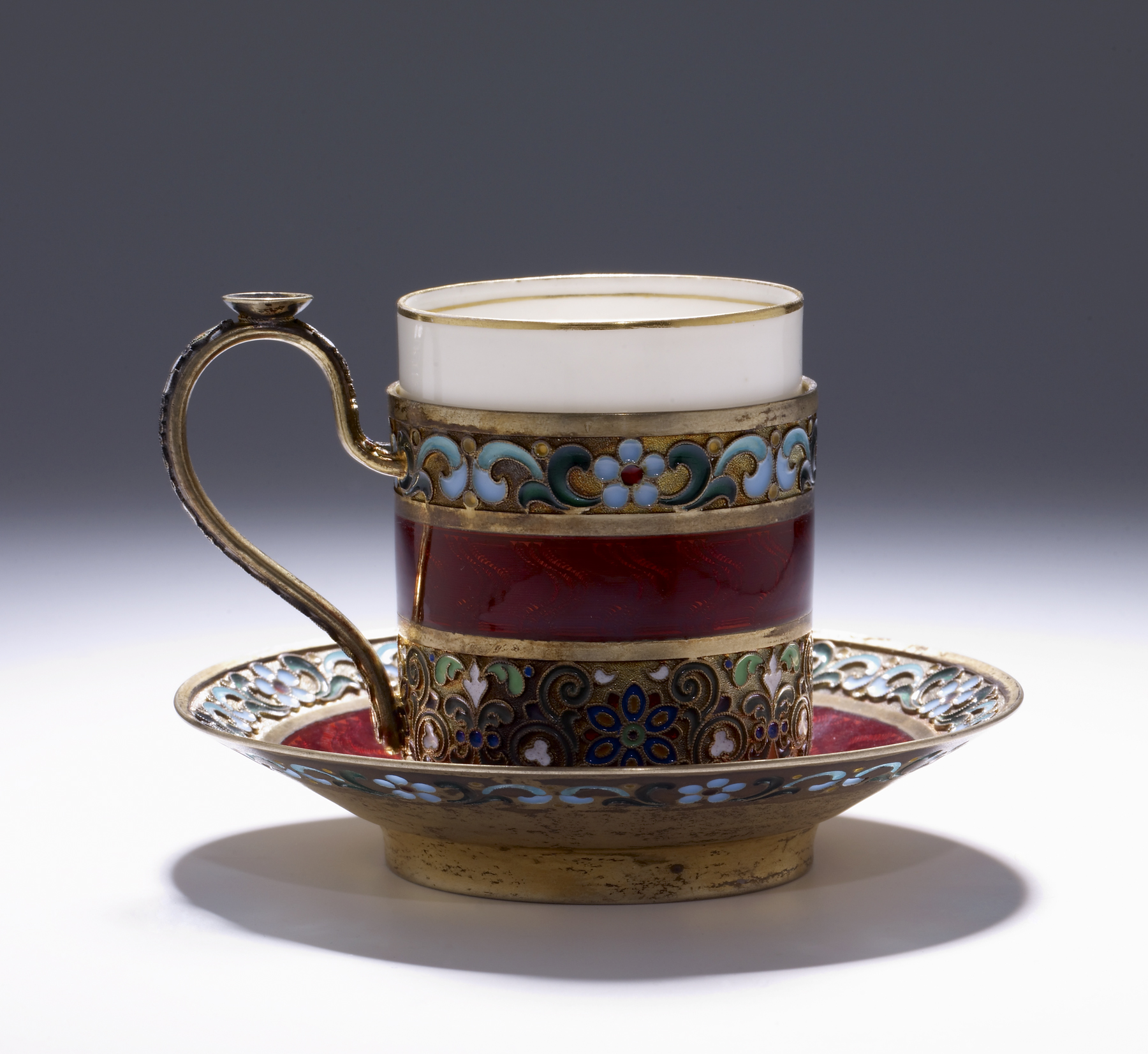Demitasse and Saucer
(18th and 19th Centuries )
The cup is encircled by three bands of decoration: plique-à-jour flowers and leaves raised over a stippled gilt ground; translucent red enamel over a zigzag guilloché ground; and opaque painted filigree blossoms and scrolls in light green, white, dark green, blue, and translucent red over a stippled gilt ground. The handle is decorated with geometric motifs in opaque enamel raised over a silver gilt ground. A cup-shaped, silver gilt thumb piece is attached to the top of the handle.
The saucer's decoration includes bands of plique-à-jour and translucent red enamel over a guilloché ground identical to those on the cup. Raised, opaque filigree enamel is used for the central motif: a rosette in translucent red, blue and green enamel encircled by a band of foliate scrolls in white, deep green, and blue enamel.
The porcelain liner by the Brothers Korniloff is rimmed in gilt.
The Khalili Collection includes a very similar demitasse set produced by the 11th Artel
(Rus070).
Inscription
Provenance
Provenance (from the French provenir, 'to come from/forth') is the chronology of the ownership, custody, or location of a historical object. Learn more about provenance at the Walters.
Jean M. Riddell, Washington, D.C. [date and mode of acquisition unknown]; Walters Art Museum, 2010, by bequest.
Geographies
Russia, Moscow (Place of Origin)
Measurements
Saucer (.1): H: 1 x Diam: 4 in. (2.5 x 10.2 cm)
Demitasse Cup Holder (.2): H: 2 9/16 x W: 3 1/8 x D: 2 in. (6.5 x 8 x 5.1 cm)
Cup Liner (.3): H: 2 3/16 x Diam: 1 7/8 in. (5.6 x 4.8 cm)
Credit Line
Bequest of Mrs. Jean M. Riddell, 2010
Location in Museum
Not on view
Accession Number
In libraries, galleries, museums, and archives, an accession number is a unique identifier assigned to each object in the collection.
In libraries, galleries, museums, and archives, an accession number is a unique identifier assigned to each object in the collection.
44.957


